US foreign policy in Afghanistan and Pakistan
… by Colonel Eugene Khrushchev (ret), VT Editor
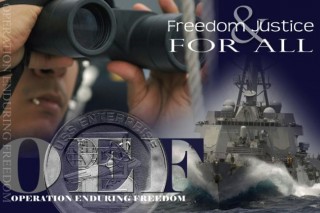
Washington’s policy of “managed chaos” has backfired in Afghanistan and Pakistan.
VT Editor, Colonel Eugene Khrushchev says the US excelled at chaos building but has yet to succeed at managing it.
The sleep of reason brings forth monsters.
El sueño de la razon produce monstruos.
…Francisco José de Goya
Afghanistan is in dire straits due to the United Kingdom’s ‘divide & rule’ colonial legacy and an unholy alliance with the United States circa Charlie Wilson’s endless War, which mutated from carefully inflamed anti-Soviet insurgency into anti-American jihad.
The most notorious hallmark of British Great Game machinations and resultant invasions is the Durand Line, which arbitrarily sliced through Pushtunistan, planting an irredentist time bomb between Afghanistan and Pakistan.
While artificial demarcation has neither been addressed nor defused, it has continually undermined Afghan-Pakistani and American-Pakistani security cooperations via cross-border sorties and gunfire on both sides of the Durand Line.
The catastrophic success of the proxy war, led by the CIA from Pakistan, denied the USSR its strategic intent to modernize Afghanistan on par with Soviet Central Asian republics and to forestall violent extremism on its southern flank.

However, this Pyrrhic victory quickly unraveled with Afghanistan sinking into anarchy and civil war, culminating in the full-fledged blowback which rocked the United States on 9/11.
Since its inception, the US overt invasion in Afghanistan, codenamed Operation Enduring Freedom, has been plagued by a profound misunderstanding of the root cause of the problem and, consequently, a decade-long wild goose chase for an elusive victory with no end in sight. Thus, the vicious circle of mission creep has inexorably set in.
A meaningful, long-term, cohesive and comprehensive US strategy towards Afghanistan and Pakistan has been a non-starter from day one.
Having been defenestrated by the Manichean paranoia and messianic crusade of the previous administration’s neo-con cowboys, further attempts at resuscitation have been thwarted by internal bickering within the White House Afghan Team and perennial inter-agency turf battles.
A crystal-clear strategy has been hijacked by a smorgasbord of fuzzy tactical adjustments that have been hyped, tried and failed in an orderly fashion.
It began with counter terrorism’s ‘small foot print’, then to the fancy ‘ink-blot’ security spread, followed by the COIN-lite ‘condition, clear, hold & build’ population-centric doctrine, which was abruptly superseded by the bizarre ‘fight, talk, build’ triple chase.
In Afghanistan, Washington ignored Bert Lance’s quip, ‘if it ain’t broke, don’t fix it’, echoed by Colin Powell’s maxim ‘you break it, you own it’.
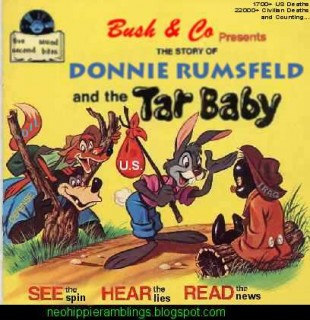
As a result, America is wrestling with a Hindu Kush tar baby– the longest and one of the most expensive US military occupations in history.
Thanks to US foreign policy wonks’ strategically blind flight of mind, Afghanistan has degenerated into the epicenter of the Global Drug War against humanity.
Over the last 10 years, it has wiped out 1 million people abroad, while Al-Qaeda Central in Pakistan has successfully metastasized in the Arab Peninsula as well as the Maghreb.
The only way to save the day and avoid a disgraceful dénouement for the USA is to jettison ‘feel-good’ political correctness and the conventional ‘more of the same’ mentality.
As an opener, the question should be not ‘what can America do for Afghanistan?’ but ‘who could extricate America from Afghanistan? with a follow-up poser: ‘how to rescue the future of Afghanistan from its past and present demons of destruction?
Sleeping Station
Historically speaking, Afghanistan has never been a top priority for the US in the grand scheme of things. Initially the country was relegated to the bottom of the State Department’s pecking order with ‘benign neglect’ as a cheesy substitute for a vigorous foreign policy – for better or worse.
Observation Post
As the Soviet Union kept expanding its bilateral relations with Afghanistan, the US Embassy in Kabul was ordered to wake up and train a spyglass on the growing economic and trade cooperation between the two countries.
Without much hoopla, a dormant diplomatic mission was reactivated as an intel shop, the first CIA footprint in Afghanistan, to be expanded later into a narco-terrorism R&D field lab.
Quiet Competition
When the USSR embarked on a full-scale central planning infrastructure build-up in Afghanistan, the United States, however reluctantly, reacted in kind – sort of – as a CIA low-key eavesdropping mission was beefed up with USAID window-dressing.
All in all, in the Afghan economic stand-off between the USSR and the USA, the Soviet Union won hands down, having strictly adhered to a long-term ‘win-win’ strategy vis-à-vis its neighbor, while the United States was dabbling in a haphazard catch-up game against its Cold War sworn foe on the opposite side of the globe.
Tendency towards dependency
During this unprecedented period of tranquility and development, it seemed like the countervailing pressures of socialist vs. capitalist competition allowed Afghanistan to enjoy the best of both worlds. As one US diplomat quipped at the time,
‘Kabul prefers to strike American cigarettes with Soviet matches’.
From then on, the country’s successive rulers, having being spoiled by the superpowers’ economic competition, devolved into freebie junkies hooked on foreign investment and aid – to the detriment of national sovereignty, self-determination, as well as social and economic development.
Clarion call
After the victory of the Saur Revolution in Afghanistan (the Afghan Spring) and the Islamic Revolution in Iran (the Persian Spring), within a year the USA had lost two adjacent springboards in its ‘sphere of interests’ to project its military power and directly threaten the southern borders of the USSR.
Suddenly, gripped by a siege mentality and Cold War paranoia, the United States jettisoned all false pretenses to ‘aid’ Afghanistan.
Having failed to demonstrate and explore the advantages of capitalism vs. socialism, the US bells and whistles policy in Afghanistan went down the drain and the White House went ballistic.
Target of opportunity
As the State Department and USAID were consigned to the backseat, the CIA and USIA took the steering wheel to drive home a newly unfolding mission: to arrest an alleged Soviet thrust towards the Indian Ocean.
In a rare consensus between the Pickle and Fudge Factories of US intelligence and foreign services, Afghanistan was quickly identified as the most vulnerable high-value target to hit the Soviet Union where it hurts.
Wilson’s War 1: Anti-Soviet jihad

An Executive Order – signed by the US president and endorsed by the US Congress – set in motion the largest crusade against the USSR since the WW2.
The immediate goal was, under the cover of plausible deniability, to create a proxy force in Pakistan to destabilize and conflagrate Afghanistan; with the follow-up to provoke the Soviet Union to come to the rescue, and the ultimate goal to entrap the USSR in a bleeding war of attrition.
The US Information Agency, in order to create a United Front against the Soviet Union, overtly orchestrated a global propaganda and disinformation campaign, whipping up media frenzy over the Kremlin’s allegedly nefarious foreign policy.
In perfect unison with the USIA, the CIA covertly conducted psychological operations in Afghanistan to foment anti-Soviet sentiments and promote radical Islamization in Pakistan to harbor, finance and train wannabe Afghan jihadists.
Damned if you do and damned if you don’t

The Soviet gerontocracy was suddenly struck with a stark dilemma in Afghanistan: to abandon a long-time, though fragile, friend under mounting internal and external pressures, or to succor its next-door neighbor by proving beyond a shadow of a doubt that the USSR was an all-weather ally and true-blue partner.
At a time when the United States couldn’t have cared less, the Soviet Union was the first foreign power to recognize Afghanistan’s independence and sovereignty, thus establishing amicable diplomatic and trade relations – without any hidden agenda of ‘vital interests’ directed against other states in the region.
While multiple adventures in Africa, the Middle East and other parts of the world were ideologically motivated by the Cold War stand-off, Soviet foreign policy in Afghanistan was an exception rather than the rule.
Since its inception, it was based on a steady strategy of social and economic development through accelerated industrialization and universal education, what in current terminology would be properly described as an open-ended commitment to nation-building.
There was another important factor which came to the fore as a security risk: unlike faraway brotherly Cuba, Afghanistan was the nearest neighbor whose political stability and territorial integrity were exposed to irredentist claims by Pakistan, which had been recruited as the US’s ‘indispensable ally’ against the Soviet Union.
Contrary to USIA malicious innuendo, the USSR wasn’t itching for a casus belli to ‘invade and conquer Afghanistan, eradicate Islam and impose atheistic Communism’.
At the time, the Brezhnev Doctrine of peaceful coexistence and détente was anything but Trotsky’s idée fixe on permanent revolution. Rather, the Politburo had become a parody of its former self when compared with the bygone Comintern era, schlepping through its last years as an octogenarian club of status-quo apparatchiks.

The agonizing decision-making process in Moscow was focused not on a panzer blitzkrieg, but rather on an incremental remedial course to mitigate the Stalinesque excesses of the Kabul revolutionary leadership and to solidify and protect a successful Soviet legacy of comprehensive long-term development in Afghanistan.
And that’s exactly what the CIA was aiming for. However, what was supposed to be a Soviet quick-fix palace coup and stability and peacekeeping follow-up, ended up as an American-led ‘jihad’ in Afghanistan, conducted from Pakistan as asymmetrical guerrilla warfare by the pre-paid and trained proxy force.
Thus, the USSR took the bait and got trapped into a nine-year-plus war of, with the Soviet Armed Forces’ robust ability to address the insurgency’s root cause compromised by the Politburo’s skittish unwillingness to give the marching orders to cross the border and nip the Pakistani-based American Frankenstein in the bud.
Out of sight, out of mind
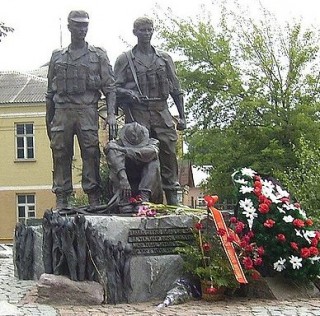
As soon as the 40th Army pulled out of Afghanistan on February 15 1989, the ‘mission accomplished’ jamboree was swiftly arranged at the CIA HQ to celebrate in anticipation of Wilson’s War victory in Kabul.
In a state of euphoria, the US intelligence community boasted that the Democratic Republic of Afghanistan would collapse within hours after the withdrawal of Soviet troops. Oops – it took a little more time, almost three years.
The newly discovered CIA core incompetence was further aggravated by the agency’s unavailing efforts to reconcile and unite the ragtag factions of its rented extremists, the predecessors of the Taliban, into the united political and military front against a recalcitrant ‘infidel’ government of Afghanistan.
The USIA open-air propaganda warfare against the USSR in Afghanistan was over, and the pliant mainstream media, as if by a wave of the magic wand, canceled in one day its decade-long PR campaign of rebranding firebrand assassins for hire as the ‘moral equivalent of America’s founding fathers’ and ‘freedom-fighters’.
Nevertheless, in violation of a UN-brokered agreement on Afghanistan, the United States continued its clandestine CIA/ISI joint operation to supply extremist bands with the wherewithal and weapons to dislodge the stand-alone DRA under the rule of Dr. Najibullah.
When the jihadists had eventually taken over the country’s capital, the White House briefly indulged in self-adulation – only to pull the rug out from under Afghanistan and Pakistan.

Dr. Robert Gates, the top CIA spook who used to be at the helm of the Ghost War against the Soviet Union in Afghanistan, in his reincarnation as the DOD chief in 21st century, expressed a reserved regret that the United States had precipitously abandoned Afghanistan and Pakistan.
It was rather a disingenuous statement: the United States couldn’t have abandoned Afghanistan and Pakistan, because it never had any long-term commitment for this particular duo – before or after the Soviet pullout.
In US foreign policy deliberations, these Cold War ‘allies’ were nothing more than pre-paid expendables in a long-distance proxy war of attrition, to be discarded as spent cartridge shells.
A glaring display of the cynical approach to bilateral relations and gentlemen agreements – Uncle Sam doesn’t abandon places, it only betrays allies – was a rude awakening to American sidekicks who aspired to be treated as equal and respectable partners.
A generation later, the US of A still hasn’t formulated any comprehensive strategy that would transcend the patron/client fly-by-night transactional approach.
Small wonder that the post 9/11 re-engagement of Pakistan and Afghanistan by the USA has been met with deep-rooted anti-American resentment in the region.
Wilson’s War 2: Chaosistan: Bellum omnium contra omnes
In Washington DC an arduous quest to conceptualize chaos theory beyond the realm of mathematics has been at the heart of iconoclastic aspirations to tame entropy in foreign affairs as a sine qua non for the New Global Order, made in the USA for the USA.
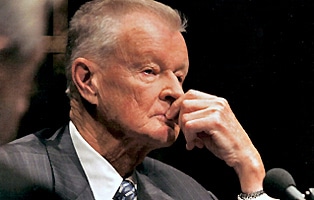
Inspired by management consultant guru Tom Peters’ seminal book, “Thriving on Chaos: Handbook for a Management Revolution”, the stewards of US National Security have bestowed upon the world the beta versions of the new foreign policy paradigm: ‘managed chaos’ propagated by Zbigniew Brzezinski, to be followed by another derivative, ‘creative chaos’, attributed to Condi Rice.
The place where the theoretically lofty vision faced the crash test in reality was Afghanistan, with the results falling in full accordance with the law of unintended consequences as the can of worms was yanked wide open without any meaningful idea of how to ‘thrive on’, ‘manage’ or ‘be creative’ about the ghastly content.
When General McChrystal was the US Commander in Afghanistan, in his sales pitch revelation to the Commander in Chief, he deftly coined ‘Chaosistan’ to evoke the terrifying sensation of preordained apocalypse – lest the surge of salvation failed to get authorized.
He should have known better: that’s exactly what ‘the freedom fighters’ turned Afghanistan into – Chaosistan – when they interpreted the US freedom agenda as a free license to kill, kidnap and pillage: anybody, anytime, anywhere.
They claimed to be ‘holy warriors’, the mujahedin, but their unholy acts of unbridled violence and despicable atrocity against the Muslims of Afghanistan were completely incompatible with the intrinsic notions of Islam and Jihad.
The armed anti-government opposition had a historical opportunity to embark on a path of peace and prosperity for the sake of creating the UAE – Untied Afghan Emirate – as an Islamic alternative to Islamism, socialism, capitalism and all other -isms – admired by everyone, feared by no one.
However, for more than 10 years, under the aegis of the CIA & ISI, with Saudi Arabia financing and Wahhabist indoctrination, the Afghan and Arab recruits in Pakistani boot camps had honed a different type of skill set: insurgency HR management (propaganda, intimidation, torture & assassination), IED product placement (infrastructure destruction & demolition), business development (opium poppy cultivation and drug trafficking) and hit-and-run guerrilla tactics.

Left to their own devices, the CIA-sponsored ‘liberators’ happened to be no more than a bunch of rival tribal militias – run by land and drug war-lords – hell-bent on ripping the country into grisly narco fiefdoms.
Ahmad Shah Massoud, the famous Lion of Panjshir, as the spiritual and military leader, was the only patriotic warrior who had the vision and wisdom to save the war-ravaged country from sliding into the abyss of omnivorous anarchy.
But even the revered Hero of Afghanistan didn’t have a silver bullet to reverse the momentum and arrest the excruciating erosion of nationhood or the abrogation of law and order.
Wilson’s War 3: Jihadistan: The Blowback

What was dismissed by the USIA disinformation campaign as Soviet propaganda against noble ‘freedom fighters’ has ricocheted as a self-fulfilling prophecy of the post-mortem Democratic Republic of Afghanistan.
The moral decay of the Islamic State of Afghanistan and the rise of the Islamic Emirate of Afghanistan was a sweeping transition from the dollar-driven decadent disorder of rapacious warlords and druglords to the fulminating fundamentalist order of the Taliban.
The common denominator for both regimes, under the guise of the similarly misleading ‘Islamic’ and ‘mujahedin’ noms de guerre had been their bare-knuckle Islamist and jihadist self-identity, inherently inimical to the puritanical peace-loving preaching of Islam.
Superficially, as the saying goes, ‘All Pashtuns are not the Taliban, but all the Taliban are Pashtuns’. However, the issue is much more complicated than that.
Firstly, the Taliban is not in any way, shape or form a national liberation movement of Pushtunistan. Secondly, the Taliban’s definition has been liberally interpreted and perceived as a generic insurgency against the Karzai regime and the foreign occupation led by the US.
The Taliban is a jihadist network of predominantly Deobandi Pashtuns, including Haqqani and Hekmatyar offshoots, with Salafi/Wahhabi Arab “message force multipliers” on both sides of the Afghan/Pakistani border.
A vestige of the anti-Soviet insurgency betrayed by the CIA, the Taliban was reconstituted and rejuvenated as the ‘veritable arm’ of the ISI to fix the anarchy of American ‘freedom fighters’ and install an Islamabad-friendly government in Kabul.
Even after the UBL declared global jihad against the USA and redeployed Al-Qaeda to Afghanistan to partner the Taliban, Uncle Sam, habitually quick on the draw and trigger-happy, was suddenly playing a slow-mo gun-shy babe in the woods.
Thus, multiple requests by the JSOC for carte blanche to terminate without remorse ‘the clear and present danger’, the CIA’s prodigal asset cut loose, had been effectively stonewalled – that is, until 9/11 hit the USA out of a clear blue sky.
Wilson’s War 4: When chickens come home to roost
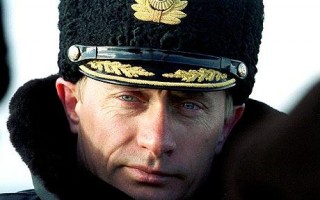
While President Putin was the first foreign head of state after 9/11 to convey his sincere condolences to President Bush, for the skeptical Soviet veterans of the CIA Ghost War in Afghanistan, it took a suspension of disbelief to consider Al-Qaeda, the OGA’s favorite jihadist outfit in the days of yore, as the main and only perpetrator of this heinous crime against the American people.
Without a smoking gun, the official storyline about the true cause of the 9/11 disaster was inconclusive; numerous botched attempts to suppress mounting evidence to the contrary or discredit it as a loony conspiracy theory only further ignited sinister suspicions about ‘an inside job.’
The 9/11 Commission, hand-picked by the Bush administration, tried to make the CIA and the FBI designated scapegoats for failing to anticipate and prevent the sneak attack on the US homeland.
No doubt, the absence of the US National Security ISR fusion center, excessive compartmentalization and a lack of interoperability between US intelligence, counterintelligence and law enforcement agencies, had effectively neutered the early warning system against imminent threats, whether domestic or foreign in origin.
However, in the broader historical context of US policy making, whatever the federal agencies do or don’t do – R&D of STD/HIV in Africa, LSD in America or narco-insurgency in Afghanistan and Pakistan – the buck stops right at the White House.
Wilson’s War 1, which was sanctioned by the POTUS and launched by America in 1978 as an anti-Soviet jihad in Afghanistan by a proxy force from Pakistan, boomeranged with a vengeance as the anti-American jihad, the mutated Wilson’s War 4, launched by the usual suspects against their own master.
Both former and current White House officials have yet to come clean and admit that it was the Machiavellian foreign policy of their own making which triggered a chain of events that led to the 9/11 tragedy.
Operation Enduring FUBAR
The 9/11 tragedy could and should have catalyzed deathbed repentance and soul searching for the US Chief Executive and his predecessors. A collective catharsis at the White House might have revealed that:
- Foreign policy should not be shaped by the exigencies and expediencies of bipartisan internal politics with moral authority and intellectual integrity being swapped for narrow-minded bigotry, messianic exceptionalism and pharisaic duplicity;
- International relations are a much more complicated and enduring endeavor than a linear quarter-mile drag race; therefore, supercharging the Pentagon power plant with trillion-dollar injections is detrimental to US stability and security and will invariably backfire;
- To substitute strategy for tactics is a cardinal sin for any commander in chief; to employ the right tactics for a wrong or nonexistent strategy – winning battles to lose the war – only postpones the inevitable debacle and makes it more expensive and humiliating; to pursue the wrong strategy with the wrong tactics is the worst endgame possible.
Until that enlightening eventuality comes true, US foreign policy, especially in Afghanistan and Pakistan, keeps mangling the wrong thing wrong, dealing with the devil – ‘freedom fighters’ turned jihadists, warlords and druglords – for the sake of spreading chaos as an excuse for establishing a permanent ‘small footprint’ military presence, time and again.
Editing: Jim W. Dean

Colonel Evgeny Khrushchev, editorial board member of Veterans Today is also is the military analyst at Russia Today (RT)
Contrary to the family tradition, he didn’t apply to Vladivostok Navy Academy to join the Pacific Fleet but enrolled in the Red Banner Institute specializing in Central Asian affairs.
Experience: Afghanistan
PSYOPS officer of the 56th Airborne Assault Brigade in Gardez, Paktia, Democratic Republic of Afghanistan First Secretary of the Russian Embassy in the Islamic Republic of Afghanistan.
Yugoslavia
The Russian Airborne peace-keeping mission under the aegis of UNPROFOR.
The United States
The main mission: to promote rapport & rapprochement between Russian & American veterans, in close cohesion with US military attaché General Reppert and Special Forces General Metaxis.
* Led the 1st delegation of Soviet-Afghan Vets to the US at the invitation of VVA & VVC
* Addressed SOLIC Command and JFK Special Warfare School
* Consulted CBS 60 Minutes on the Soviet campaign in Afghanistan
* Interviewed by ABC 20/20 and Discovery Channel
* Featured by France Press, Boston Globe and USN& WR during the 1st Moscow putsch.
Inspired by Chinese strategy, Persian Sufi poetry and British cats; addicted to Country & Blues and muscle cars.
Favorite personal/personnel carrier – KA-50 Black Shark, due to financial & social constraints, settled for KTM 950 SM.
ATTENTION READERS
We See The World From All Sides and Want YOU To Be Fully InformedIn fact, intentional disinformation is a disgraceful scourge in media today. So to assuage any possible errant incorrect information posted herein, we strongly encourage you to seek corroboration from other non-VT sources before forming an educated opinion.
About VT - Policies & Disclosures - Comment Policy




